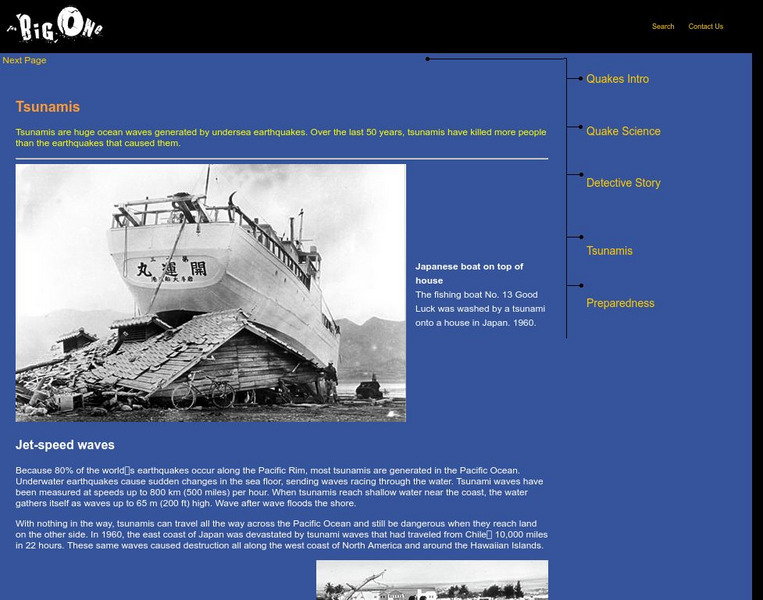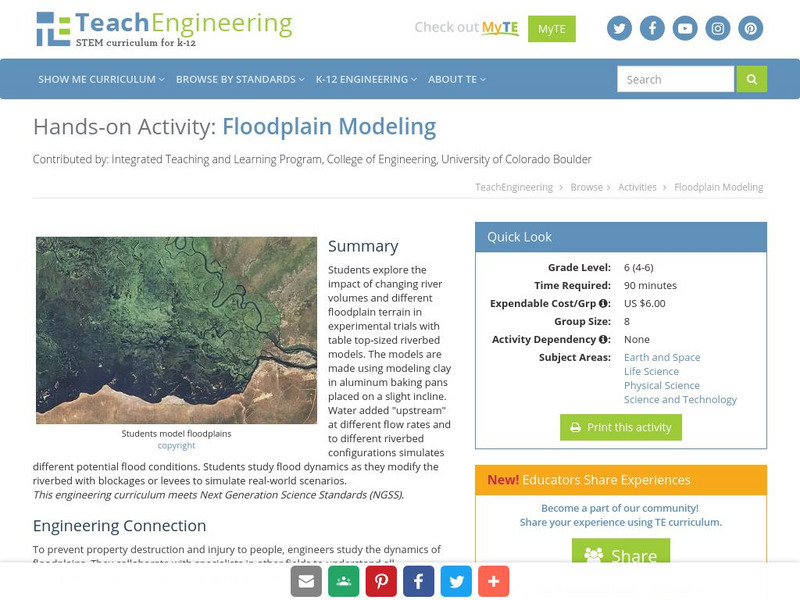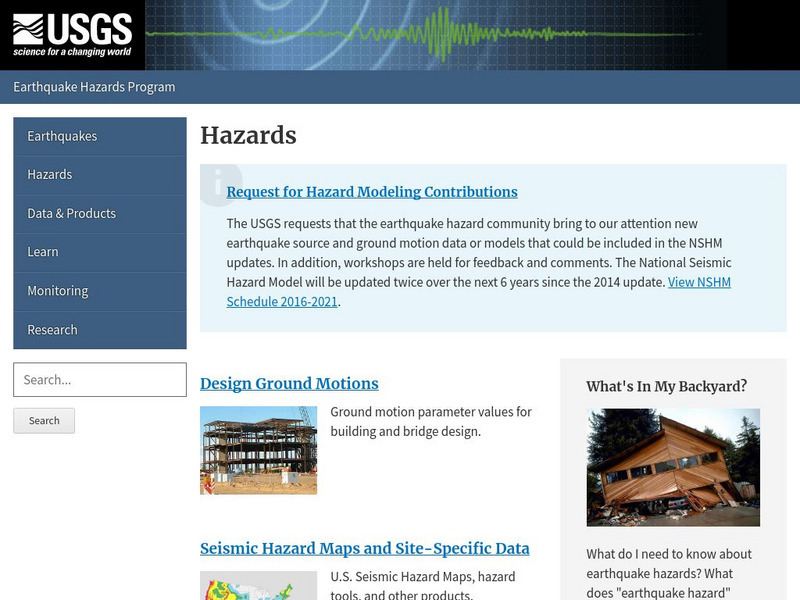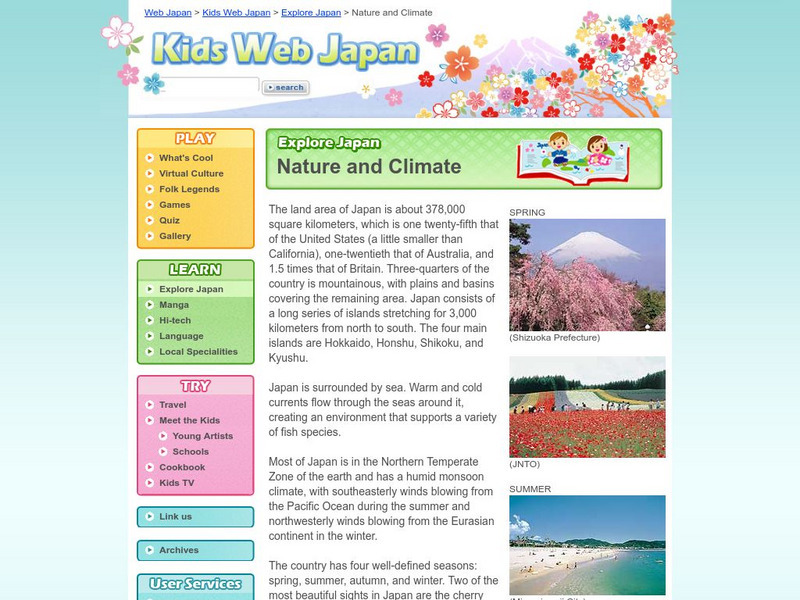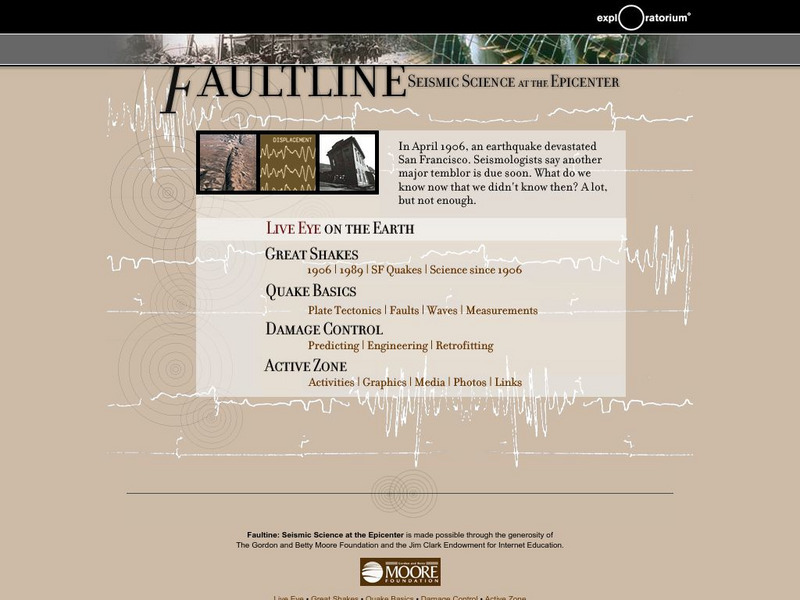The Washington Post
The Gulf Coast in Katrina's Wake
This vivid look at New Orleans and the surrounding areas truly gets to the core of the destruction imposed by Hurricane Katrina. A graphic overview, panoramic photographs, and short videos are just a few of the amazing resources offered...
TeachEngineering
Teach Engineering: Hurricanes
Students learn what causes hurricanes and what engineers do to help protect people from destruction caused by hurricane winds and rain. Research and data collection vessels allow for scientists and engineers to model and predict weather...
Columbia University
The Earth Institute at Columbia University
Bringing people together to discuss Earth's environmental problems, The Earth Institute addresses climate change, environmental degradation, poverty, disease, and sustainable use of resources.
Burke Museum
Burke Museum: Tsunamis
The information on tsunamis provided at this site is part of the Burke Museum's online exhibition on earthquakes and geology. Prevention is discussed, along with famous tsunamis in history.
eSchool Today
E School Today: Your Cool Facts and Tips on Earthquakes
Explains what earthquakes are, what causes them, the different types, tsunamis that can be caused by them, and how to prepare if living in an earthquake-prone area.
Woods Hole Oceanographic Institution
Woods Hole Oceanographic Institution: Tsunami: An Interactive Guide
A complete, interactive learning activity covering the science of tsunamis, preparedness, research, and historical tsunamis. Excellent animations and real, historical recordings of survivors allow the learner to experience what happens...
Province of British Columbia
Get Prepared for an Earthquake in British Columbia
Provides extensive information and a guide on how to be prepared for an earthquake in British Columbia.
TeachEngineering
Teach Engineering: Floodplain Modeling
Students explore the impact of changing river volumes and different floodplain terrain in experimental trials with table top-sized riverbed models. The models are made using modeling clay in aluminum baking pans placed on a slight...
US Geological Survey
Us Geological Survey: Earthquake Hazards
Find out about earthquake hazards and damage. Some of the topics are an introduction to hazards, hazard maps, soil types and damage, and recent damage caused by earthquakes.
Choices Program, Brown University
Choices: Teaching With the News: The Haitian Crisis: Thinking Historically
Lesson from 2010 using multi-media resources, including video, audio, and primary sources which challenge students to think beyond the earthquake and consider the role of Haiti's rich history in the crisis.
Other
Marshall University: 1937 Flood: Huntington, West Virginia
Photo collection of 1937 flood in Huntington, West Virginia.
PBS
Pbs: Are the World's Weather and Climate Changing?
What's going on with our weather? Learn about it in this lesson plan that examines the climate and weather patterns in the world today. It has a weather quiz and guidelines that help the students understand weather changes occurring...
Curated OER
Refugees at Houston's Astrodome.
NPR has kept a journal of the on-going events of what is being called the largest natural disaster to hit the United States, Hurricane Katrina.
PBS
Pbs Learning Media: The Lowdown: After the Fires: North Bay Teachers and Students Talk Disaster Prep Lesson Plan
Wildfires burned whole neighborhoods in Northern California in a matter of minutes. In Texas, Florida and Puerto Rico, hurricane winds and flood waters wreak havoc on buildings, power lines and roads. No community is entirely safe from...
NOAA
Noaa: History: Galveston Storm of 1900
Read an account of the worst natural disaster in American history in terms of loss of life, the Galveston hurricane of 1900. View historic photos of the devastation that resulted.
US Environmental Protection Agency
Epa: Learn the Issues: Flooding
This site provides real-world issues as well as the scientific research and technology used to support the EPA's mission to protect human health and safeguard the natural environment.
US Environmental Protection Agency
Epa: Learn the Issues: Tornados
Find out about some real-world issues as well as the scientific research and technology used to support the EPA's mission to protect human health and safeguard the natural environment.
Japanese Ministry of Foreign Affairs
Web Japan: Nature and Climate
Would you like to find out how Japan's climate compares to where you live? Read about the climate, topography, and natural disasters. There are many pictures and a quiz at the end.
A&E Television
History.com: 2021 Events
2021 is nearly history. Take a look back at a year that saw political turmoil, the distribution of COVID-19 vaccines, an unusual Olympic Games, devastating natural disasters, advances in space exploration and more.
BBC
Bbc News: Science and Environment: How Earthquakes Happen
This site uses a series of animations to give an overview of earthquake types and their causes. This colorful site is accompanied by brief descriptions. Additional animations of other natural disasters are featured on the right side of...
Exploratorium
Exploratorium: Faultline
This site includes all things shaky--earthquakes that is. Observe real-time data regarding seismic activity all over the world. Other modules include information about history's great quakes, earthquake basics and how to recover from...
Burke Museum
Burke Museum: Earthquake Science
This section of the Burke Museum's online exhibit on earthquakes and natural disasters focuses on the science of earthquakes. Topics that are covered include plate motion, heat, interior of the earth, and more.
PBS
Pbs Learning Media: Out of Proportion
Students are asked to explain how natural disasters affect environmental health.
Other
China Highlights: Ming Dynasty
Learn all about the rise and fall of China's Ming Dynasty. Its origins are discussed from the fall of the Yuan Dynasty to the rise of rebel army leader Zhu Yuanzhang. Yuanzhang's battles and his rise to Emperor status are also touched...
Other popular searches
- Esl Natural Disasters
- Natural Disasters Worksheets
- Natural Disasters Reading
- Types of Natural Disasters
- Art Natural Disasters
- Science Natural Disasters
- Natural Disaster Tsunami
- Natural Disaster Powerpoint
- Teaching Natural Disasters
- Natural Disaster Vocabulary:
- Math Natural Disasters
- Geography Natural Disasters



